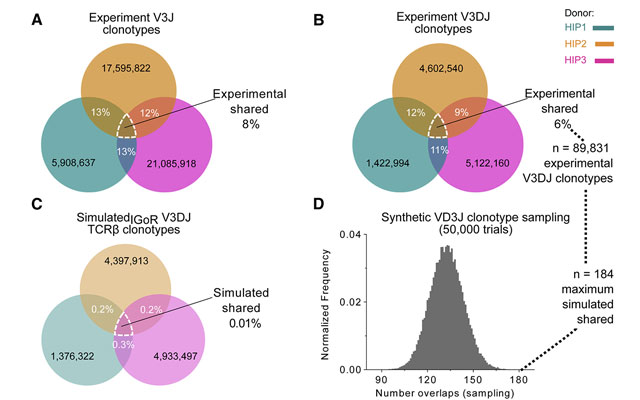
‘Comet’ Supercomputer Calculations Boost Our Understanding of Immune System
SDSC assists Vanderbilt University Human Vaccines Project
By:
- Kimberly Mann Bruch
Media Contact:
- Kimberly Mann Bruch - kbruch@ucsd.edu
- Jan Zverina - jzverina@sdsc.edu
Published Date
By:
- Kimberly Mann Bruch
Share This:
Article Content
While researchers around the world race to develop an effective and safe COVID-19 vaccine, a team from the San Diego Supercomputer Center (SDSC) at UC San Diego contributed to a study led by Vanderbilt Vaccine Center of Vanderbilt University Medical Center (VUMC) on T cell receptors, which play a vital role in alerting the adaptive immune system to mount an attack on invading foreign pathogens including the Coronavirus SARS-CoV-2.
SDSC’s Comet supercomputer was recently used to perform complex calculations on the receptor sequence data from sorted human T cells to allow scientists to better understand the size and diversity receptor repertoire in healthy individuals. The team’s findings were published last month in Cell Reports as a follow-up study to earlier findings about B cells published in the journal Nature last year.
Both B cells and T cells are constituents of the adaptive immune system and form the second line of defense against viruses, bacteria, cancer, and other toxic pathogens that slip past the innate immune response. The adaptive immune system remembers the invading pathogen after first encounter and forms the basis of effective vaccines. To advance our understanding, the researchers sequenced receptors from the transcriptome of billions of cells to assess the somatic recombination of different gene segments that comprise the circulating B and T cell receptors from healthy Caucasian individuals. They found that T cell receptors, like B cell receptors, exhibit significantly higher overlap in different individuals than expected by chance.
In addition, the unprecedented scale of this sequencing project revealed that the size and diversity of immune repertoire are at least an order of magnitude larger than the estimation made from previous studies. This work is part of a broader effort supported by the Human Vaccines Project to decipher the components of the immune system, with the ultimate goal of understanding how to generate life-long protective immunity.
“Our most recent study puts us one step closer to truly understanding the extreme and beneficial diversity in the immune system, and identifying features of immunity that are shared by most people,” said James E. Crowe, Jr., director of the Vanderbilt Vaccine Center of Vanderbilt University Medical Center. “Now we continue to identify T cell receptors and antibodies that can be targets for vaccines and treatments that work more universally across populations.”
A primary aspect of the team’s ongoing research is focused on integrating the findings of these two studies toward the development of an effective vaccine against emerging and evolving threats. Crowe explained, “We are getting closer to being able to use these large databases of human immune molecules to rapidly discover natural molecules that can be used as biological drugs.”
Madhusudan Gujral, a senior bioinformatician at SDSC; Robert Sinkovits, SDSC’s director of scientific computing applications; and Cinque Soto, a Vanderbilt computational biologist and lead author of the study, share Crowe’s enthusiasm over the implications of this research and recognize the importance of access to high-performance computing resources, such as Comet, to make it possible.
This work was supported by a grant from the Human Vaccines Project and institutional funding from Vanderbilt University Medical Center. The authors acknowledge support from TN-CFAR grant (P30 AI110527). This work also used the Extreme Science and Engineering Discovery Environment (XSEDE), which is supported by NSF grant (ACI-1548562), and Comet supercomputer at SDSC, supported by NSF grant (ACI-1341698).
Share This:
You May Also Like
Stay in the Know
Keep up with all the latest from UC San Diego. Subscribe to the newsletter today.



